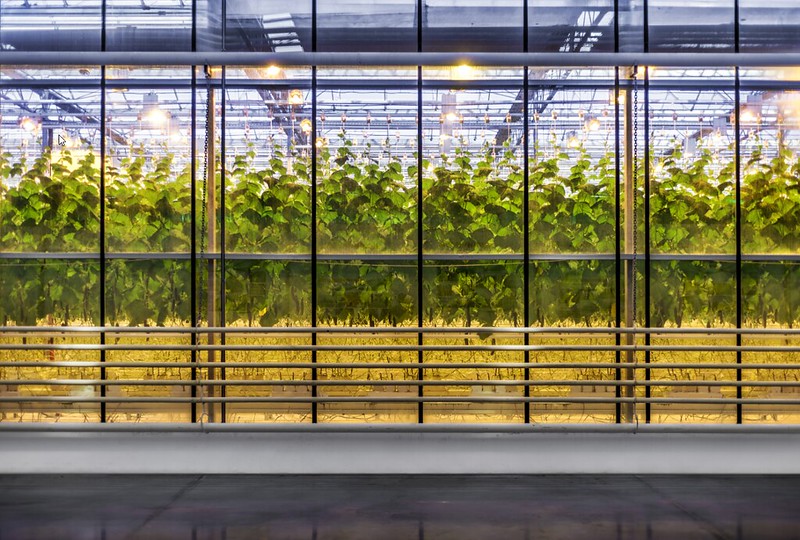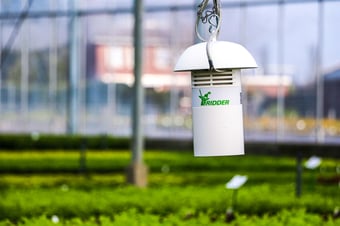This blog breaks down how growers can save energy and improve efficiency in their greenhouse with data, energy insights, and process automation.
Energy use in a high-efficiency greenhouse
Whether you are located in a warm or cold climate; cultivating in greenhouses can consume a lot of energy. For growers operating in a competitive market, cutting back on energy usage without understanding the consequences on their crops can lead to less, or lower quality yield. To understand how to make the greenhouse more efficient with process automation, it’s important to know where greenhouses use the most energy - and where they can make savings.
With an increasing amount of operations being designed for year-round production, the use of combined heat and power (CHP) systems is commonplace in horticulture in Northern Europe. These systems allow growers to use natural gas to generate heat, electricity and CO2. A vast amount of energy and resources need to constantly be injected into the greenhouse for heating, light, and CO2. Reducing one of these resources will influence various factors inside the operation.
With heating, for example, it’s not always possible to save energy by 'just reducing' the heating temperature in the greenhouse; as this will also influence the control over the humidity levels, and therefore affect the crop growth and quality of the production. Process automation and smart software can help you obtain a thorough understanding of the available energy-saving options and create a balanced control strategy that will reduce your resource usage without compromising on production or quality.
Understanding the way energy is used in a greenhouse can help identify where it can be optimised to become a truly, high-efficiency environment. Over a year, a greenhouse gains more energy than it uses - known as the greenhouse effect. In the winter, greenhouses continuously lose 150-200W depending on how low the temperature dips and how the wind is blowing. But in many cases, when there is radiation from the sun, this energy is captured by the greenhouse and heated naturally. But for growers, the need for consistent conditions within the greenhouse climate means that there are instances when it will be necessary to use natural gas to heat the greenhouse in winter. If the greenhouse becomes overheated, ventilation will need to be used to cool the greenhouse, which is both inefficient and costly. To run a truly high-efficiency greenhouse, these processes need to be automated so every joule from the sunlight is efficiently used and energy is not lost by excessive venting.
Boost greenhouse efficiency with energy data and insights
Process automation with a climate computer can provide insights in the energy usage and management via information about outside weather conditions and climate and sensor data from within the greenhouse.
Energy-efficient screen strategy
Energy savings climate screens can be used as extra insulation, providing control over temperature, humidity and light levels. Ridder has developed smart controls that allow you to use and manage the application of the screens more efficiently and optimize the amount of hours the screens are closed without negatively affecting crop growth or causing humid conditions. This allows you to create a programmed screen control strategy to open and close at certain times of the day to maintain the optimal conditions for the plant and minimise the use of gas for heating.
Energy-efficient humidity control
Humidity control is one of the most costly areas of energy use in the greenhouse. As a result, creating a climate strategy to decrease humidity in the greenhouse can help increase energy efficiency. To do this, installing accurate sensors is key. Sensors give accurate readings of temperatures and humidity levels throughout the greenhouse - which can vary by several degrees.
Ridder controls can use multiple sensors in an area and combine information to offer better and more accurate averages of the humidity in the greenhouse. Using the right measuring boxes and sensor systems with enough accuracy, growers can target specific areas. This helps avoid using excessive heating, by not needing to overheat to compensate for other areas of the greenhouse.
The climate computer's humidity control features can manage the screen installation and often open the screen when the humidity reaches a certain level. When humidity control opens the climate screens for just 5%, the heating savings of that screen drops by 50%. Therefore it is very important to control this setting as accurately as possible. Many growers switch on humidity control at 2-3 grams per cubic meter. With accurate sensors and a homogenous climate, growers can drop their humidity deficit set point to as low as 0.5 grams per cubic meter and save a lot of energy. By preventing unnecessary opening of the screen, growers will save energy by keeping heat in the greenhouse.
Energy-efficient lighting strategy with DLI control
Supplemental lighting in wintertime helps growers to provide their crops with a sufficient amount of light every day. Naturally, if it is a dull day, more supplemental light is needed. If it is a bright day, less supplemental light is needed. It’s not advisable to provide more light than the plants can use. Ridder provides controls to help use as much natural light as possible, to reduce the amount of artificial light that is needed. In a day, smart climate control can save 2 or 3 hours of supplemental light usage- which saves a lot of electricity. Ridder’s Daily Light Integral (DLI) controller anticipates whether the day will be overcast, whether the crop needs more or brighter supplemental lighting, or less supplemental lighting if there is a lot of natural light available. This ensures that the plant gets the right amount of light, using as little electricity as possible.
Energy-efficient CO2 dosing
Finally, CO2 savings are a key part of running an energy-efficient greenhouse. Greenhouses may use boilers or CHPs that heat the greenhouse and pipe excess CO2 into the greenhouse as fertiliser for the crops. When the heating system is not running, growers may need to apply additional liquid CO2 to supplement what is required by the plants. The liquid CO2 is often an expensive or scarce resource. To be most effective, CO2 must be injected when the plants most need it. That’s where Ridder’s CO2 Optimizer calculates the exact amount of CO2 a plant needs on a cost-benefit basis. The feature in the control software calculates the bottom line of what growers can gain and helps automate the CO2 dosing process fully.
The financial and efficiency gains growers can make through smart application of process automation are game-changing. To find out more about how climate computers boosted energy efficiency for Ridder’s clients download our case study featuring the Frech greenhouse grower Tom D’aqui
Download the case study here:



